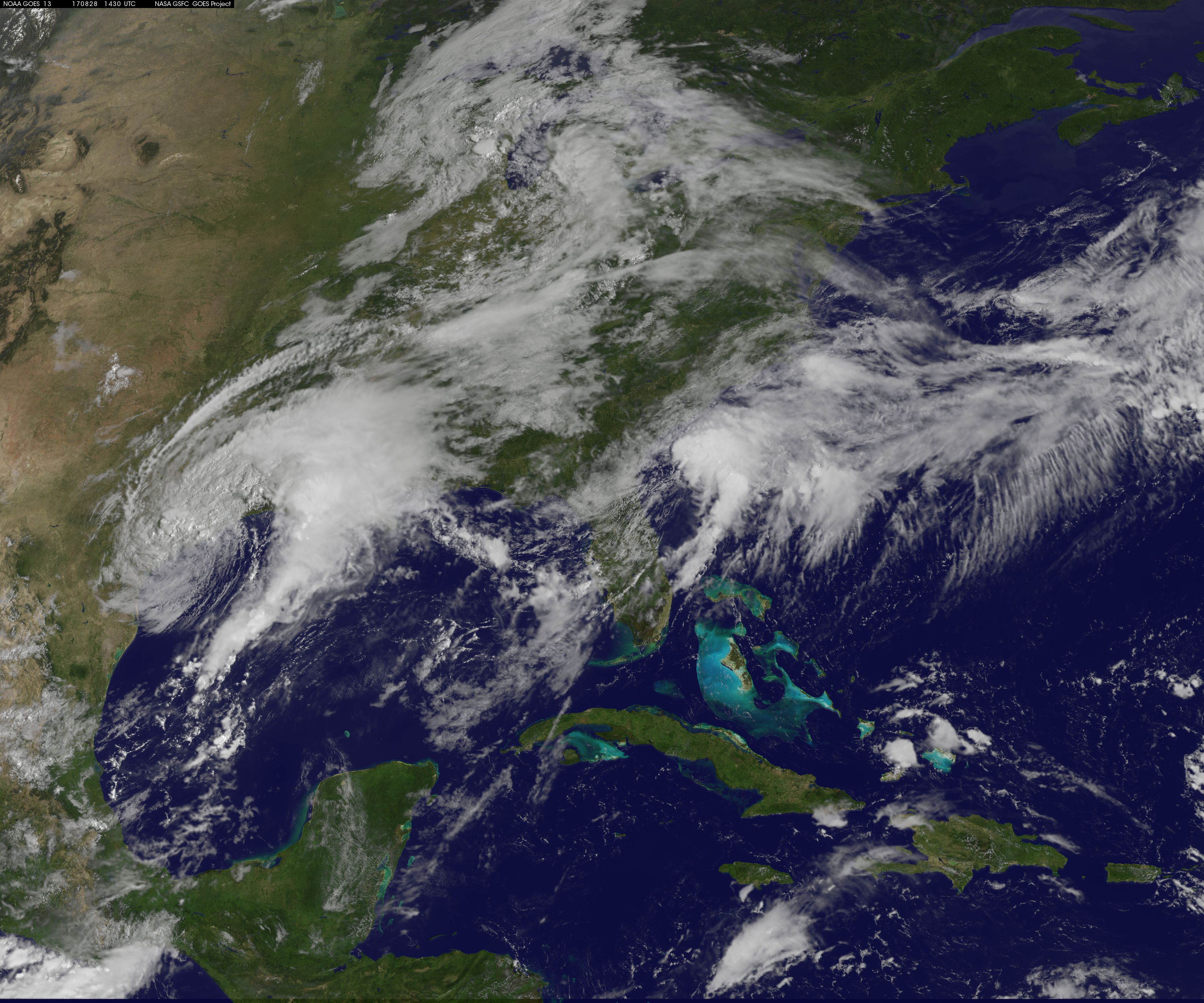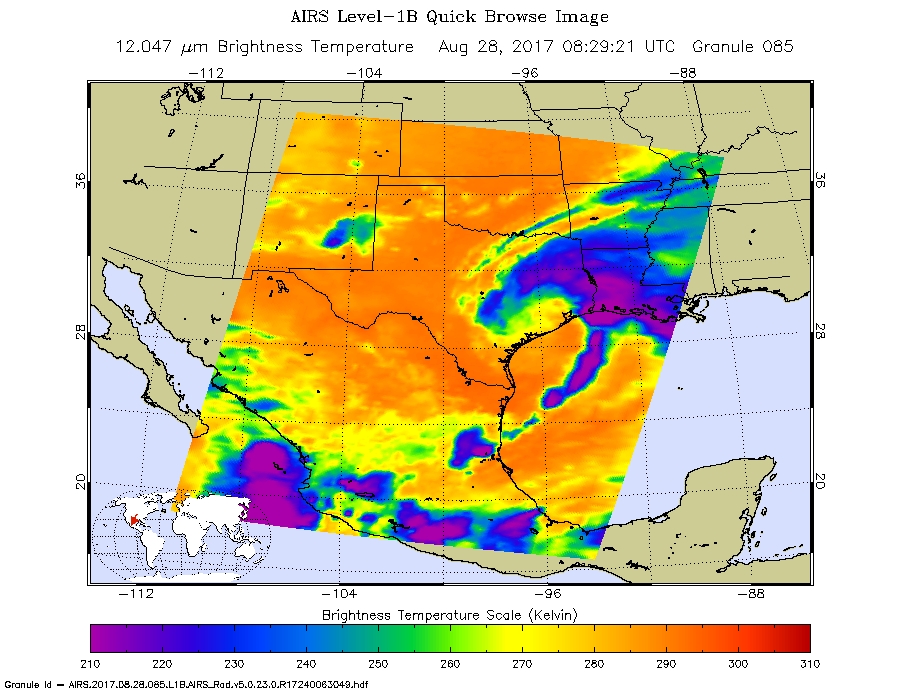NASA Tracks Harvey's Rainfall, Safeguards James Webb Telescope

NASA is monitoring Tropical Storm Harvey as it moves back into the Gulf of Mexico this morning (Aug. 28) after causing heavy rains and severe flooding across Texas and Louisiana this past weekend.
Harvey initially hit the Texas coast as a Category 4 hurricane on Friday (Aug. 25). NASA's aptly named Aqua satellite — "aqua" is Latin for "water" — has been gathering data that has helped scientists identify the clouds within the tropical storm that are capable of generating heavy rainfall.
On Sunday (Aug. 27), NASA's Johnson Space Center (JSC) in Houston was closed to everyone except mission-critical staff due to the flooding. JSC is home to Mission Control, which is responsible for NASA's operation of the International Space Station. The massive rainfall has flooded many of the roads surrounding JSC. [How to Donate to Harvey Victims Online]
The Aqua spacecraft made readings using one of its instruments, known as the Atmospheric Infrared Sounder (AIRS). The instrument detected the temperature of the clouds in the storm using infrared light, and scientists used that information to find out how large — and therefore how powerful — the storm clouds were in any given area the satellite surveyed, according to a NASA statement.
"The higher the cloud tops, the colder and the stronger they are," officials wrote in the statement. "So, infrared light … gathered by the AIRS instrument can identify the strongest storms within a tropical cyclone."

On Sunday morning, AIRS discovered that Harvey's coldest clouds — those capable of dropping the heaviest rainfall — were near the tropical storm's center and east-of-center, which corresponded to areas extending from southeastern Texas into southeastern Louisiana. The cold clouds have temperatures as low as minus 63 degrees Fahrenheit (minus 53 degrees Celsius).
Today, NASA responded via Twitter to the outpouring of public concern for NASA's James Webb Space Telescope, which is currently housed at JSC and is set to launch in 2018. The agency confirmed that the "personnel and hardware are safe and everyone is taking appropriate precautions." [Hurricane Harvey: Photos of the Massive Storm from Space]
Get the Space.com Newsletter
Breaking space news, the latest updates on rocket launches, skywatching events and more!
According to NASA's Aug. 27 announcement, JSC's senior management will evaluate the conditions of the facility and nearby roads on a "day-to-day basis." For those in need, NASA also recommended using the FEMA mobile app and the Red Cross map to locate the nearest shelters.
Follow Doris Elin Salazar on Twitter @salazar_elin. Follow us @Spacedotcom, Facebook and Google+. Original article on Space.com.
Join our Space Forums to keep talking space on the latest missions, night sky and more! And if you have a news tip, correction or comment, let us know at: community@space.com.

Doris is a science journalist and Space.com contributor. She received a B.A. in Sociology and Communications at Fordham University in New York City. Her first work was published in collaboration with London Mining Network, where her love of science writing was born. Her passion for astronomy started as a kid when she helped her sister build a model solar system in the Bronx. She got her first shot at astronomy writing as a Space.com editorial intern and continues to write about all things cosmic for the website. Doris has also written about microscopic plant life for Scientific American’s website and about whale calls for their print magazine. She has also written about ancient humans for Inverse, with stories ranging from how to recreate Pompeii’s cuisine to how to map the Polynesian expansion through genomics. She currently shares her home with two rabbits. Follow her on twitter at @salazar_elin.









